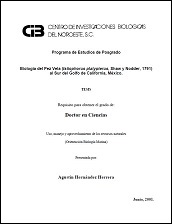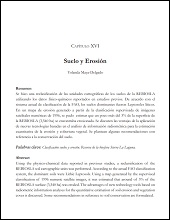Salicornia bigelovii (TORR.): UN SISTEMA MODELO PARA INCORPORARSE COMO CULTIVO AGRÍCOLA EN ZONAS ÁRIDO-DESÉRTICOS
Salicornia bigelovii ( TORR. ) : A MODEL SYSTEM TO BE INCORPORATED AS AN AGRICULTURAL CROP IN ARID - DESERT ZONES
Author
CRUZ ENRIQUE BELTRAN BURBOA
GUADALUPE AMANDA LÓPEZ AHUMADA
JUAN MANUEL VARGAS LOPEZ
LUIS GUILLERMO HERNANDEZ MONTIEL
JUAN JOSE REYES PEREZ
ALEJANDRA NIETO GARIBAY
FRANCISCO HIGINIO RUIZ ESPINOZA
FELIX AYALA ALVAREZ
RODOLFO CISNEROS ALMAZÁN
FRANCISCO JAVIER WONG CORRAL
JESUS BORBOA FLORES
EDGAR OMAR RUEDA PUENTE
Metadata
Show full item recordAbstract
"Se define como reconversión de cultivos al cambio de producto o actividad que representa mayor rentabilidad económica y viabilidad social para el productor agrícola, al mismo tiempo que da un mejor uso del suelo, mejora la fertilidad del mismo y rompe con el ciclo biológico de plagas y enfermedades. En las zonas árido-desérticas, donde se produce el 70% de los alimentos agrícolas a nivel mundial, entre los factores adversos de tipo abiótico, se destaca el de la salinidad, el cual se agudiza conforme pasa el tiempo, mermando la producción de los cultivos convencionales. En este tipo de ambientes árido-salinos, las especies vegetales nativas son halotolerantes tolerando salinidades que varían de 2 a 55 g/L de agua. Algunas especies presentan tener una importancia agroindustrial como lo es la halófita Salicornia bigelovii, la cual puede ser utilizada para forraje, alimento humano, productos cosmetológicos, producción de biocombustibles, comprimidos a base de biomasa seca para la creación de escritorios, libreros, entre otros. La producción de Salicornia, demanda aguas salobres o agua de mar, la cual es un recurso que puede ser extraído de los litorales costeros o bien de tierras firmes continentales. El escalamiento de su producción depende de por tanto de la intensificación de nuestro conocimiento sobre diversos aspectos de su biología, fisiología, bioquímica e interacción con microorganismos benéficos que contribuyan a un mejor desarrollo y mejorada productividad de este recurso, sin alterar el medio ambiente." "Crops reconversion is defined as the changing product or activity that represents greater economic profitability and social viability for agricultural producer, while giving a better land use, improve soil fertility and breaks the life cycle of pests and diseases. In dry-arid-desert, where is produced the 70% of agricultural food at level worldwide, among adverse factors abiotic, is present the salinity, which it worsens conventional crops as time passes, undermining the production. In this type of dry-saline environments, native plant species are halotolerant that supporting salinities ranging from 2 to 55 g/L water. Some species have an agroindustrial importance as is the halophyte Salicornia bigelovii, which can be used for fodder, human food, cosmetic products, biofuels production, creating desks or bookcases based in dry biomass, among others. Salicornia production demand brackish water or seawater, which is a resource that can be extracted from coastal or inland coastal mainland’s. Scaling production therefore depends on the intensification of our knowledge about various aspects of their biology, physiology, biochemistry and interaction with beneficial microorganisms that contribute to improved productivity and better development of this resource, without altering the environment."
Collections
Related items
Showing items related by title, author, creator and subject.
-
PROMOCIÓN DEL PERIFITON PARA EL CULTIVO DE CAMARÓN BLANCO: HACIA UNA ACUICULTURA ECOLÓGICA
DOMENICO VOLTOLINA LOBINA; JUAN MANUEL AUDELO NARANJO; MARIA DEL ROSARIO PACHECO MARGES -
Suelo y Erosión
YOLANDA LOURDES MAYA DELGADO


